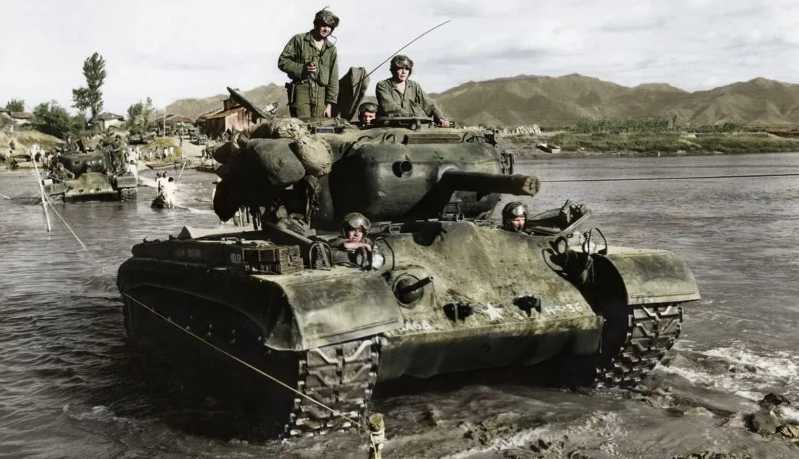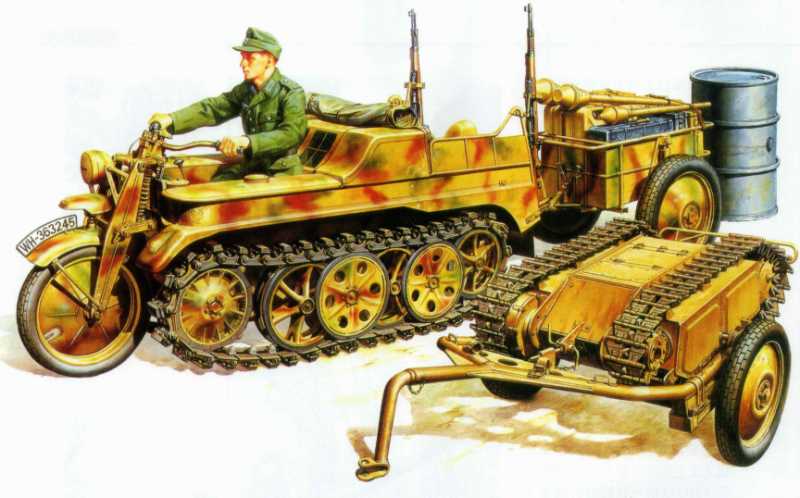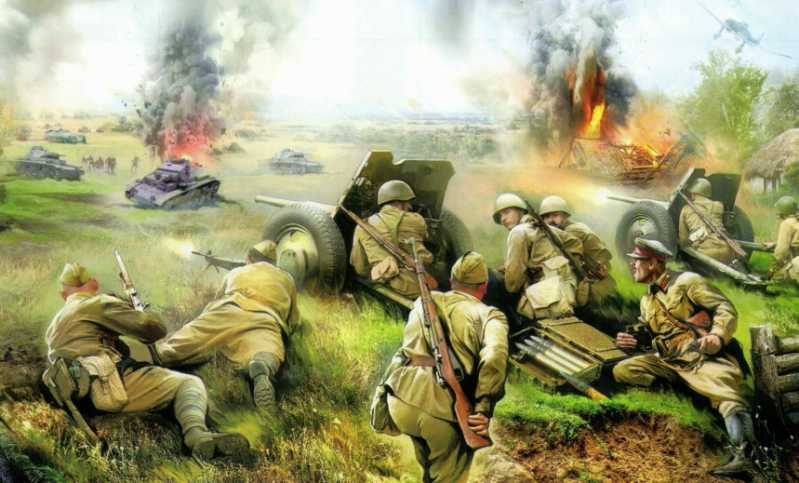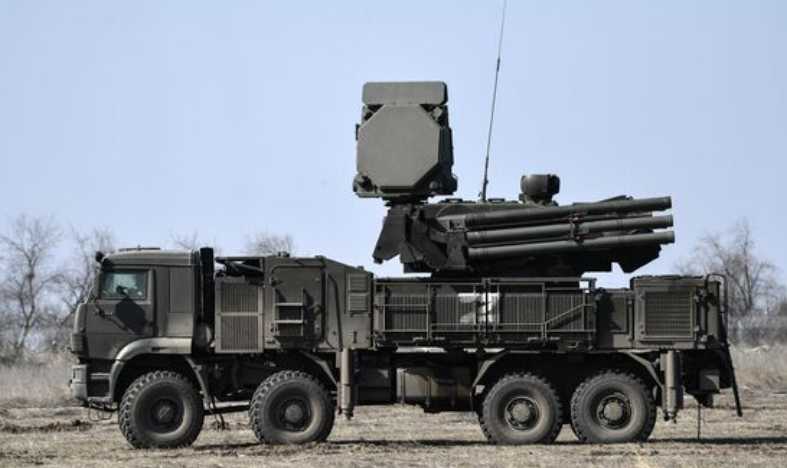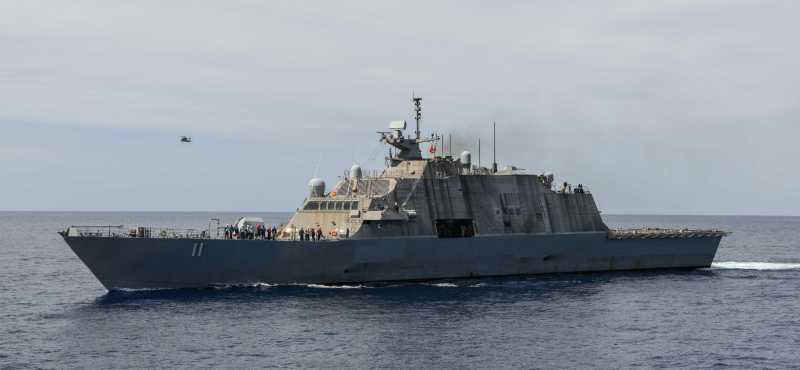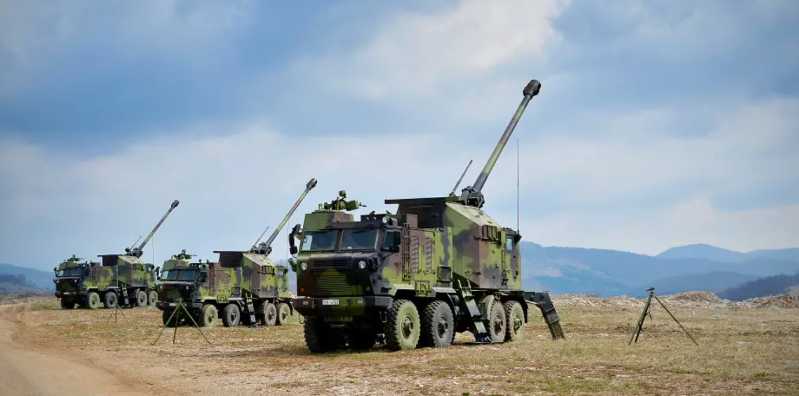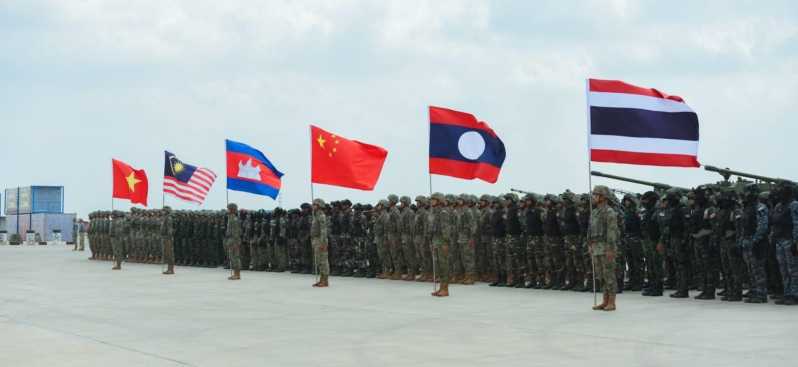Fully movable canard + large side strips
J-20 pioneered the use of canards in the fifth-generation aircraft
The main aerodynamic surfaces of the aircraft are the main wing, horizontal tail/canard and vertical tail. The main wing generates most of the lift, holding up the aircraft in the air. The main purpose of the horizontal tail and canard is to control pitch and trim.
Pitch is easy to understand, just like a horizontally placed rudder. After deflecting a certain angle, the aerodynamic force applied to the rudder surface generates a head-up or head-down moment, changing the pitch angle of the aircraft.
Trim may be unfamiliar to many people. Any aircraft has a center of gravity and an aerodynamic center when flying. When the two coincide, the aircraft is in a stable state. If factors such as fuel consumption and weapon delivery are not considered, the center of gravity of the aircraft is basically fixed; while the aerodynamic center will continue to move according to changes in speed and elevation angle, especially when flying at supersonic speeds, the aerodynamic center will move back significantly, bringing about a strong nose-down moment, so it is necessary to rely on the horizontal tail or canard to generate a certain moment to restore balance.
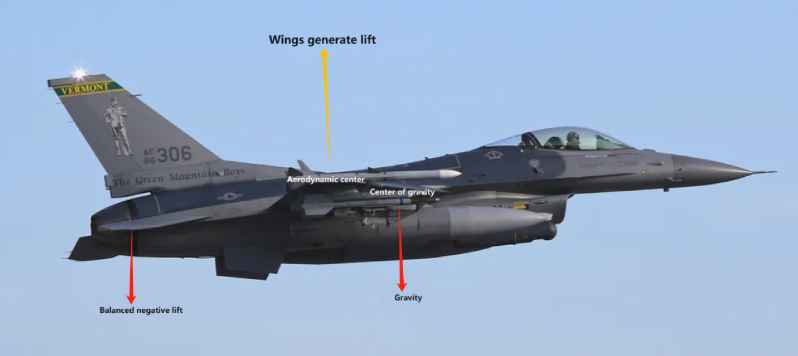
Aerodynamic layout, the main wing is in front and the horizontal tail is in the back, and the aerodynamic center is located between the center of gravity and the tail. In order to balance the nose-down moment, the tail must generate negative lift to press the tail down to maintain balance, so the total lift is reduced.


The canard-style layout has the canard in front and the main wing in the back, with the center of gravity between the canard and the aerodynamic center. In order to balance the nose-down moment during flight, the canard must generate positive lift, and the total lift is improved. When the thrust-to-weight ratio of the J-10 is not high, it only takes 250 meters to take off at a high angle, which is shorter than the F-15 with a thrust-to-weight ratio of 1.1, indicating that the aerodynamic benefits brought by its canard are very significant. Assuming the same conditions, if the canard-style layout is adopted, because the lift-to-drag ratio is larger, the main wing can be appropriately reduced in size, reduce the structural weight, and reduce air resistance; or the maximum take-off weight can be increased and the take-off distance can be shortened without changing the main wing design.
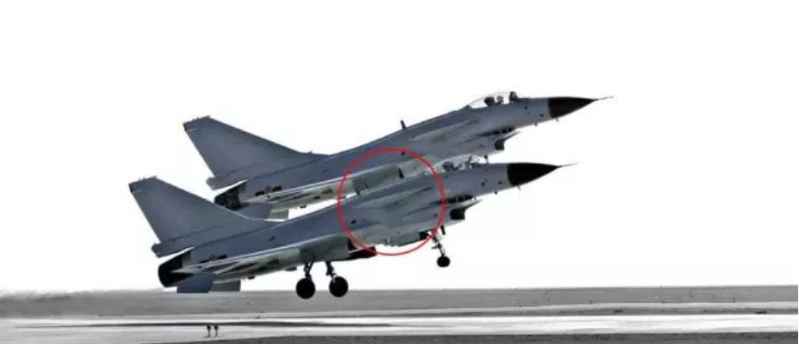
Another function of the canard is to generate vortices. To put it simply, vortices are like artificially creating a continuous small tornado on the upper surface of the main wing. The leading edge of the delta wing at a large elevation angle will generate a strongly rotating vortex, forming a high-speed low-pressure area on the upper surface of the wing, generating an upward suction vortex lift. The greater the elevation angle, the greater the intensity of the vortex, but after exceeding a certain angle, the vortex becomes unstable and begins to break, causing the wing to stall. Therefore, the high-angle performance of pure delta-wing aircraft is not good.
Swedish aerodynamicists discovered the close coupling phenomenon of the canard layout in the 1960s. When the relative position of the front wing and the main wing is appropriate, the vortex it generates interacts with the vortex of the main wing, which can stabilize the vortex core, delay the stall of the main wing, significantly increase the aircraft’s lift coefficient and lift-to-drag ratio, and improve the ability to fly at large elevation angles. Based on this theory, Sweden developed the Saab-37 Viggen fighter jet, which is famous for its short takeoff and landing capabilities. European countries have a special liking for the canard layout, and the JAS-39 Gripen, Rafale, and Typhoon fighter jets developed later are all canard layouts. The use of full-moving canards can actively adjust the angle and intensity of the vortex to achieve optimal vortex control.
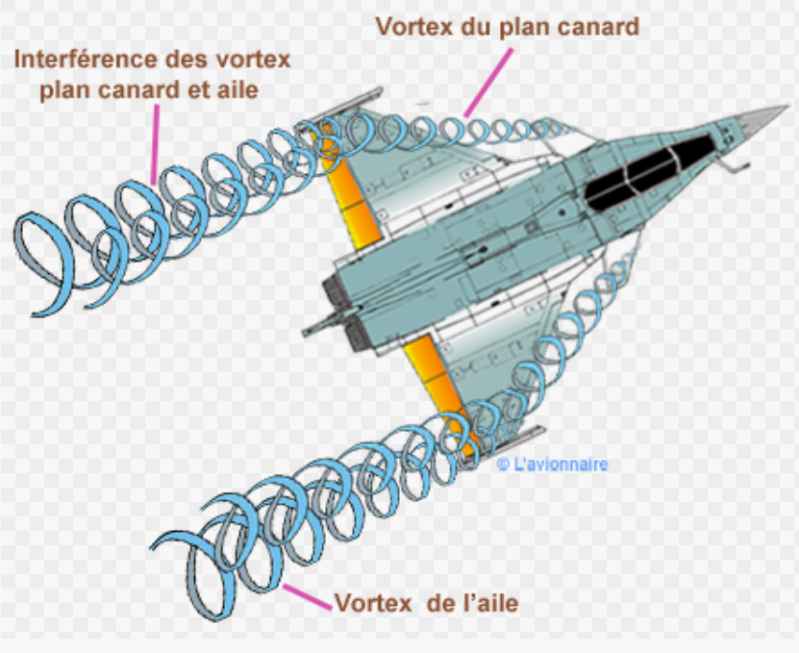
While the canards bring huge lift benefits, the design risk is also very high. For conventional aircraft, after the airflow flows through the horizontal tail, it no longer has a significant impact on the fuselage. However, after the airflow flows through the canards, the canard layout will enter the flow field of the main wing and the entire fuselage. The mutual aerodynamic interference will cause the vortex system above the wing to change violently and complexly, causing control difficulties. In order to actively, timely and accurately balance and control through the canards, it is necessary to use fly-by-wire operation and computer-assisted control. Therefore, the requirements for aerodynamic theory and control law writing of canard-type fighters are much higher than those of conventional layouts.
The United States, which believes that "the best position for canards is on other people’s aircraft" (words of the chief designer of the F-16), has studied the advantages and disadvantages of canards very thoroughly. Since the United States has an abnormally powerful engine, it can completely achieve the same indicators with a more robust conventional layout. From the perspective of cost-effectiveness and risk control, there is no need to adopt a canard layout. For Europe and China, due to the lack of high-thrust engines, they must do everything possible to improve the lift-to-drag ratio of the aircraft to achieve the highest possible flight performance. The canard layout is the best choice obtained through long-term practice.
The canard has the functions of balancing and eddy current coupling at the same time, but these two points are actually contradictory. The canard is far from the main wing, the force arm is long, the balancing ability is strong, and the eddy current coupling effect is weak. The opposite is true when the distance is close. Aircraft designers from various countries racked their brains for the position of the canard and adopted different methods according to the technical and tactical requirements of the aircraft.
The Typhoon fighter jet jointly developed by four European countries, the two largest customers, Britain and Germany, will intercept the invasion of polar bears in the North Sea and the Baltic Sea respectively, and have high requirements for high-speed interception and air combat capabilities. The Tornado ADV and F-4 are used to replace it. Therefore, it adopts long-range coupling, and the canard is very forward, and the front of the cockpit has even blocked part of the downward vision. This layout has excellent balancing ability and can perform 3-4G maneuvers at a speed of 1.6-1.8 Mach. Its supersonic maneuverability is second only to the F-22 among Western fighters. However, the canard is too far away and the coupling effect is very weak. For this reason, the Typhoon specially adds two narrow vortex generators above the air inlet. Although it looks as simple as a patch, it can also partially make up for the lack of vortex lift.

France has always insisted on independent armament construction, and it can get less support from the Allies than the United Kingdom. Therefore, the Rafale must be an all-round fighter, emphasizing multi-purpose, especially ground attack performance, to replace the Mirage III, F1 fighter, Mirage IV bomber and Jaguar attack aircraft, and also requires carrier-based aircraft. Therefore, it uses close coupling, the canard is close to the main wing, the vortex coupling proliferation effect is very good, it has a larger bomb load and a longer combat radius, and the subsonic low-altitude flight performance is outstanding. However, the Rafale’s close coupling is basically avoiding the balancing ability, the air resistance is large, and the supersonic maneuverability and high speed are much inferior. The French Air Force’s interception mission is still entrusted to the pure delta-wing Mirage-2000.
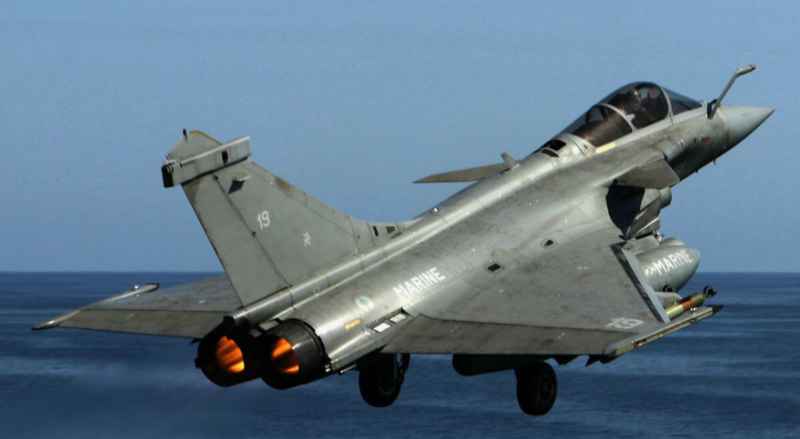
China’s J-10, originally aimed at countering the Backfire bomber group and third-generation fighters that were eyeing the north, emphasizing high-speed interception and air combat capabilities. Later, the Soviet Union disintegrated, Taiwan independence was rampant, and there was a new opponent: the F-16 across the strait. Therefore, the design of the J-10 must take into account both high-altitude and high-speed performance and medium- and low-altitude combat capabilities. It uses medium-range coupling, with the canard and the main wing kept at a certain distance, but not as far as the Typhoon, taking into account both trim and vortex lift, but also bringing complex effects to the flow field of the main wing.
Chengfei did not deliberately avoid the aerodynamic defects caused by canards like the European twin-wing aircraft, but faced the challenge and adopted an extremely complex aerodynamic design: large-area variable curvature with reversed canards to enhance the balance and pitch control capabilities; the main wing has a large aerodynamic twist, and the inner and outer wing sections use different airfoils and twist separately to cope with the adverse effects of canard vortices under different conditions to obtain the maximum lift characteristics; the rear fuselage is waisted, and the area ratio is used to reduce the resistance caused by the increase in canards. Chengfei has been focusing on the research of canards for more than 40 years since the early J-9, and its understanding of canard aerodynamic layout is unparalleled this week. The J-10 uses the most complex aerodynamic design and super flight control coordination among the third-generation aircraft, reaping all the advantages of canards and avoiding many defects, which is perfect.


However, the canard-type layout has a natural defect. At high pitch angles, the canard needs to be deflected downward to reduce the pitch angle to avoid the aircraft from pitching up and diverging, and continue to lift up until it stalls. When the pitch angle of the canard is reduced, the canard vortex no longer sweeps over the wing, and the airflow on the upper wing surface is easily separated, causing the wing to stall. Therefore, the high-angle flight capability of a pure canard-type aircraft is not very outstanding. The worry-free operation pitch angle limit of the Typhoon, Rafale and J-10 in the unloaded state is below 28 degrees.
Another commonly used lift-enhancing device for third-generation aircraft: the wingtip, the wing surface is fixed and cannot be deflected, and stable wingtip vortices can be continuously pulled out at different pitch angles. The F-18 with large wingtip has an available pitch angle of 50 degrees under air combat mounting. On the other hand, fixed edge strips cannot control the strength of edge strip vortices, and require the cooperation of other aerodynamic surfaces such as flaps and ailerons, which is less efficient than full-moving canards.

Before talking about the canards of the J-20, I talked about so many third-generation aircraft because the J-20 basically inherited the overall aerodynamic design of the J-10 and can be regarded as a super-magic modification of the J-10. It also uses a large-area medium-range coupled canard. The distance between the canard and the main wing is farther than that of the J-10, with strong balancing ability and outstanding supersonic maneuverability.
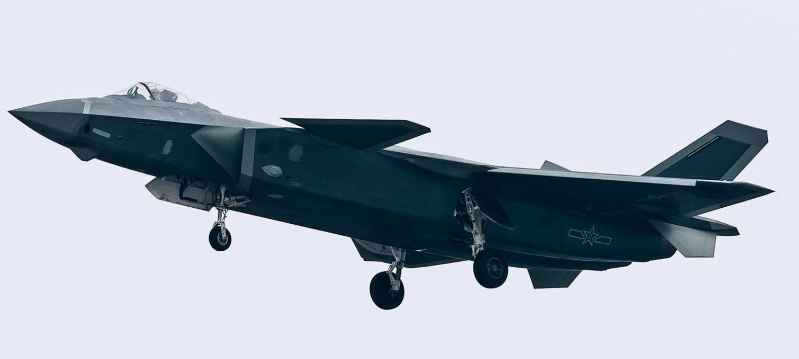
The conventional canard installation position is higher than the main wing, so that the downwash airflow of the canard is in a suitable position on the main wing. In order to pursue the stealth effect, the wing roots of the canard and the main wing of the J-20 must be on the same horizontal plane to reduce the radar reflection source. Therefore, a special design with canard upturned, main wing downturned and aerodynamic twist is adopted, which achieves a good balance between stealth and aerodynamic efficiency.
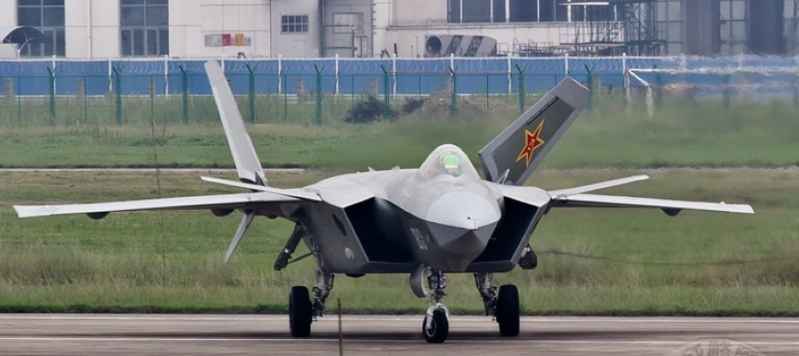
In response to the problem of insufficient vortex lift and high-angle flight, Chengfei added a strip between the canard and the main wing. This strip is quite large, and it is by no means the small strip on the gust that is so small that it is ignored by most people, but becomes an independent main vortex generator. In fact, in this layout, the vortex lift mainly comes from the strip vortex and the main wing leading edge vortex. The main function of the canard vortex is to induce the fusion and superposition enhancement of the first two. At the same time, the canard itself takes into account the role of trimming and increasing lift. Such a combined vortex system effect is stronger than both a simple side strip and a simple canard, achieving the effect of one plus one being greater than two, ensuring high-angle flight capability and strong vortex lift in various postures.
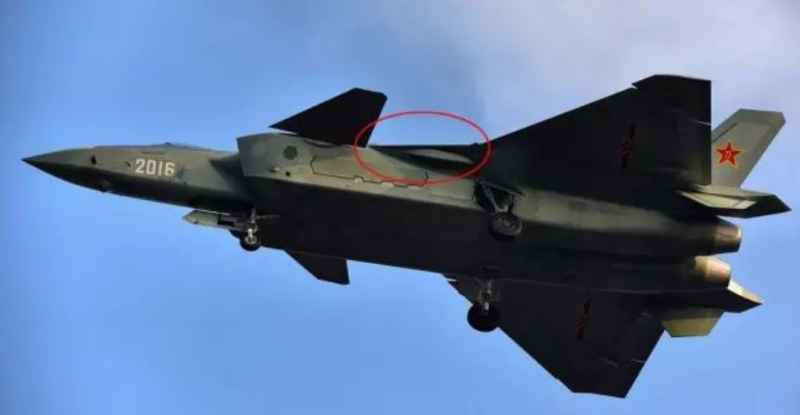
Such a combination brings unprecedented aerodynamic complexity. The vortex field of the J-20 is composed of the nose vortex, canard vortex, side strip vortex and main wing vortex generated by the prismatic nose. In fact, the sharp front intake lip is also a vortex generator. As many as five vortex systems interact with each other, and the difficulty of flight control development is beyond imagination. On several early verification aircraft, there is also a very small side strip at the intake lip in front of the canard. The first function is to block the canard installation axis, which is conducive to stealth; the second is to pull out a small vortex to delay the stall of the canard itself. The large side strip at the back is curved, similar to the Gothic side strip on the F-18E/F and Xiaolong, with stronger vortex lift. This small strip was removed from the subsequent prototype, and the pointed strip was straightened to a straight strip. The main consideration may be to simplify the complexity of the flow field and control law. The aerodynamic bonus is sufficient, and the stealth performance can be solved by composite materials and radar-absorbing coatings, or the actual measurement shows that there is not much difference.

In fact, canards and strips are the technologies of the third-generation aircraft. Chengfei has already applied them on the J-10 and Xiaolong, but they can be comprehensively applied on the fifth-generation aircraft and perfectly integrated into the lifting body and stealth design, indicating that China has left Europe far behind in the canard layout.

Summary: The J-20’s canard-plus-edge layout fully utilizes the advantages of trim and vortex lift, and its supersonic maneuverability and high-angle flight capabilities are very outstanding.
Fully movable vertical tail + ventral fin
The front part of the conventional vertical tail is a fixed wing surface, and only the trailing edge is a movable rudder surface. At high elevation angles, the fuselage will block the airflow, reducing the effect of the aerodynamic rudder surface of the vertical tail and causing poor heading stability. For this reason, the larger the available elevation angle, the larger the vertical tail area must be. The F-22’s vertical tail is unusually tall, not only has a large structural weight and large resistance, but is also very unfavorable for lateral stealth.
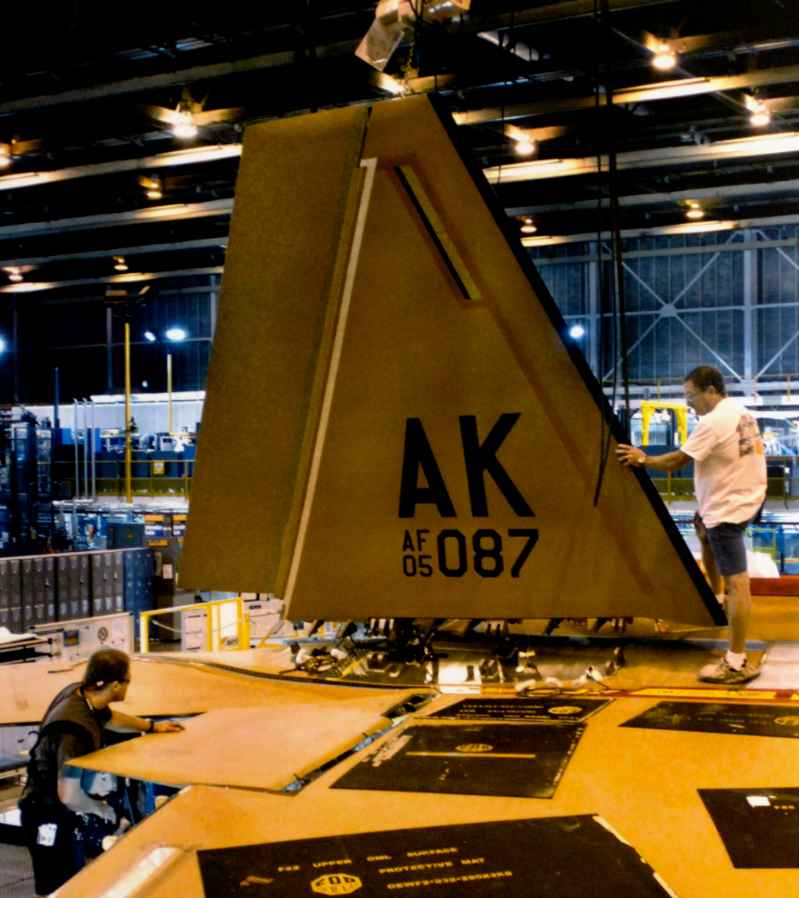
The J-20 uses an outward-inclined fully movable vertical tail, which is also used by the T-50 in the fifth-generation aircraft. Of course, the previous F-117 and F-22’s competitor YF-23 also has a fully movable vertical tail. The advantage of a fully movable vertical tail is that the entire rudder surface can generate yaw torque, the area of the vertical tail can be greatly reduced, and the heading stability can be actively controlled through the differential of the rudder surface. Like the fully movable canard, the fully movable vertical tail has very high requirements for flight control design, materials, and manufacturing processes.
The J-20 is also equipped with a pair of ventral fins, which is also widely criticized by military fans: other fifth-generation aircraft do not have ventral fins, and the ventral fins that are only available on second- and third-generation aircraft are a technological regression, which will destroy stealth, or it is considered a temporary device and will be removed after the test flight when the stability is sufficient.

In fact, this ventral fin can be regarded as an extension of the vertical tail at the bottom of the fuselage. When the efficiency of the vertical tail is reduced by the fuselage at high speed and high pitch angle, the ventral fin will be completely in the clean airflow to maintain sufficient heading stability. At the same time, the ventral fin almost completely blocks the side of the engine nozzle, which plays a very effective role in compensating for the lack of engine stealth design. See the figure below. A rough calculation shows that the total area of the J-20 vertical tail plus the ventral fin is only about three-quarters of that of the F-22. Moreover, the ventral fin is fixed, and the structural weight will be lighter than the movable vertical tail.

Summary: The design of the full-moving vertical tail plus the ventral fin will not have a significant impact on the stealth performance, and it is even better than the single tall vertical tail of the F-22, and the aerodynamic agility and control ability will exceed the F-22 (ignoring the F-22 vector nozzle).
During the ground test, the J-20 often deflected the full-moving canard and the full-moving tail to incredible angles, and the left and right were asymmetrical. As a result, some netizens loudly called for the relevant units to reinforce the canard tail, otherwise it would be damaged by the airflow during high-speed flight. In fact, there is no need to worry about this. To be able to build such an aerodynamic surface, its axis strength must have gone through countless calculations, strength tests and wind tunnel tests. Moreover, such a deflection angle is only used to check the control status of the aerodynamic surface when on the ground. It is generally not deflected at such a large angle during normal flight. After landing, the canards are erected, or the vertical tail is deflected inward, which can be used as a huge speed brake. However, the J-20 follows the tradition of Chinese military aircraft and is equipped with a deceleration parachute. The flipped yellow cylinder in the upper left photo below is the deceleration parachute compartment.
Why is it designed to have such a large rotation angle? Whether it can also rotate so much during flight is still a mystery. It has never been photographed during flight, and no one has given a reasonable explanation. My guess is that the wing surface can be tilted to a large angle in an instant, and reset immediately after changing the flight state, and it can be differential on both sides, and even the four aerodynamic surfaces of the canard/vertical tail can be differential. The change in flight state brought about by this is really beyond human imagination.
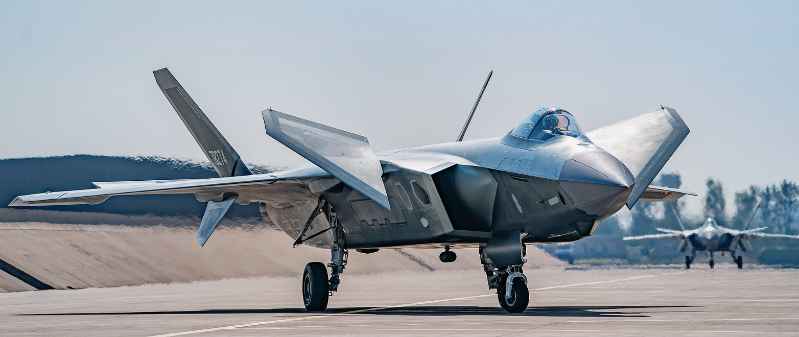
The number of aerodynamic surfaces of the J-20 is as many as 16, including canards, side strips, leading edge maneuvering flaps, main wings, trailing edge flaps, ailerons, full-moving vertical tail, ventral fins, plus at least five vortices mentioned above, the complexity of aerodynamics is unprecedented in the world. To integrate all these elements, the flight control law is extremely difficult. A few years ago, there were rumors that the flight control programming of the J-20 encountered a bottleneck. Now it is in mass production. It seems that Chengfei has successfully solved all the aerodynamic problems. Looking at all the military aircraft in the world, the aerodynamic design is second to none.
The purpose of the super-long fuselage
After the J-20 was launched, many people questioned its 21-meter super-long fuselage, believing that it was caused by poor design and inability to reasonably control the fuselage volume, and insinuated it to be the second J-8, for example, the F-22 is only 18.8 meters long. The fuselage is super long, the structure must be very heavy, and the engine is not powerful, so the air combat performance must be poor. Even some authoritative Western media analyzed that the J-20 is a fighter-bomber.


In fact, through the above analysis, we can see that the diamond nose + DSI air intake + canard + side strips + large delta wing, the final optimized aerodynamic layout basically determines the super-long fuselage length of the J-20, of course, many other factors are also considered comprehensively. The super-long fuselage brings at least the following benefits:
First, the supersonic cruise performance is good. The larger the length-to-width ratio, the better the high-speed performance, whether it is an aircraft or a warship. The short and bloated F-35 is the best counterexample.
Secondly, the long fuselage brings a long enough force arm for the canard and vertical tail, and the supersonic maneuverability, stability and balancing ability are particularly outstanding.
The long fuselage also brings a huge internal volume, which can be easily arranged with a large bomb bay (the main bomb bay of the J-20 is longer and deeper than that of the F-22, and can carry larger ammunition), curved stealth air intake, sufficient space for electronic equipment, and most importantly, it can have a super-large fuel load.
The most powerful fighter F-22 is actually a short-legged fighter. Its original design was for the small European battlefield, and the range requirement was not high. Although it is large in size, the structure is strengthened for supersonic performance, resulting in too high density of the fuselage and low fuel ratio in the aircraft. The subsonic cruise combat radius of the F22 without external stealth configuration is about 1,000 kilometers, and the supersonic cruise combat radius is only 720 kilometers, which is less than the F-15 of similar size. It is very difficult to operate in the vast Pacific region, and it must carry external auxiliary fuel tanks for forward deployment.

Thanks to its large fuel capacity and excellent lift-to-drag ratio, the J-20’s range is estimated to exceed 4,000 kilometers, and its combat radius is at least 1,500 kilometers, which is more than 50% higher than the F-22. Gu Songfen’s "Report on Preliminary Research of Aviation Science and Technology since the Eighth Five-Year Plan" disclosed (Gu Songfen: Chief Designer of the J-8, Chinese aircraft design master) that the main performance requirements of China’s fifth-generation aircraft proposed 20 years ago were: "Without refueling in the air, the combat radius should completely cover the capitals of neighboring countries and the entire territory of Japan", which is basically consistent with the combat radius of the J-20 that was finally developed.

Photos of the J-20 carrying four large fuel tanks for test flights were posted online. The J-20 with such a configuration can reach a range of 6,000 kilometers without refueling, and a combat radius of more than 2,000 kilometers, reaching Guam directly. This is something the F-22 cannot achieve, as its legs are not as long as others.
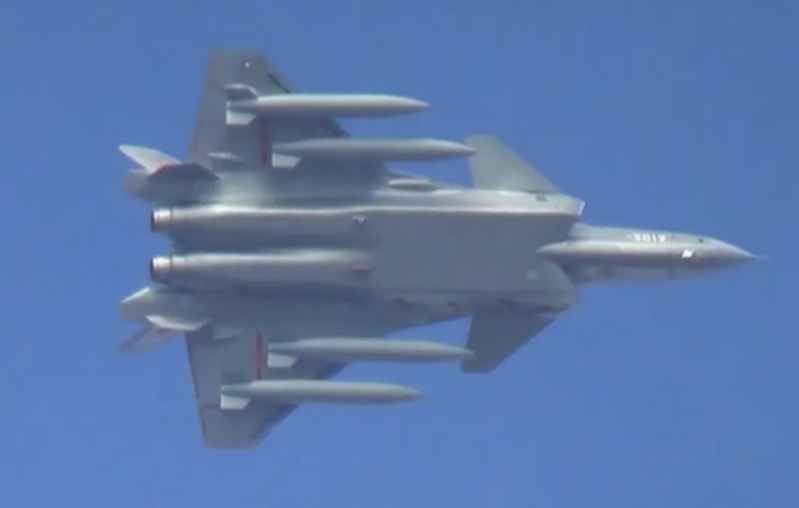
Of course, the longer the fuselage, the better, and you can’t just stretch it if you want. The structural strength and weight of the fuselage will deteriorate sharply. Although the Su-27 was very popular at the air show, it was troubled by insufficient structural strength from the beginning of its design. It was continuously improved and strengthened until the third-generation Su-35 was redesigned to completely solve the structural problem.
But don’t look at the J-20 with the old perspective of traditional aircraft structural design. It is indeed very long and big, but not necessarily very heavy. China has been researching and developing laser 3D printing technology for more than 20 years. In 2015, the "National Defense Science and Technology Industry Military-Civilian Integration Development Achievement Exhibition" publicly exhibited the actual titanium alloy main load-bearing components of the fourth-generation aircraft manufactured by laser 3D printing. According to the on-site staff, "The production cycle of the overall reinforcement frame of the fuselage of this aircraft on display is only one-fifth of that of the traditional technology. At the same time, in terms of strength, life and other indicators, it is better than traditional process technology components." Shenyang Aircraft Corporation’s J-15, J-16, and J-31, and Commercial Aircraft Corporation’s C-919 passenger aircraft, have all widely used laser 3D printed parts, including the front landing gear of the J-15 carrier-based aircraft that needs to withstand the impact of rough landing.
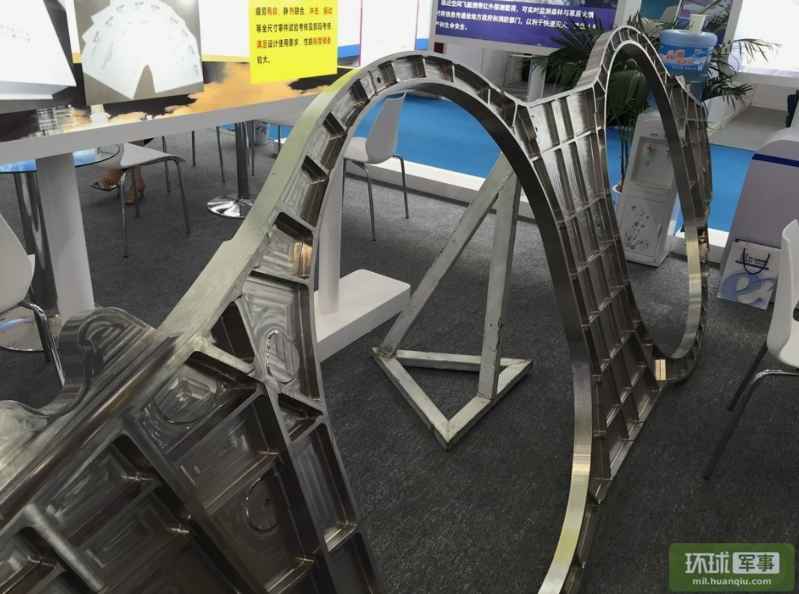
According to experts, the F-22 titanium alloy fuselage components made by traditional forging can be reduced by up to 40% in weight if made using China’s 3D printing technology while maintaining the same strength. Under the smooth and delicate skin of the J-20 is a brand-new fuselage structure full of Chinese creative spirit, which is strong and light, greatly improving the aircraft’s thrust-to-weight ratio. J-20: I am tall, but my frame is as light as a swallow
Summary: The J-20’s super complex canard + side strips + large delta wing + full-moving vertical tail aerodynamic combination will bring extremely excellent supersonic/subsonic maneuverability; the sharp diamond nose, slender lifting body fuselage, large swept delta wing and optimized DSI air inlet design can ensure excellent supersonic cruise performance.




